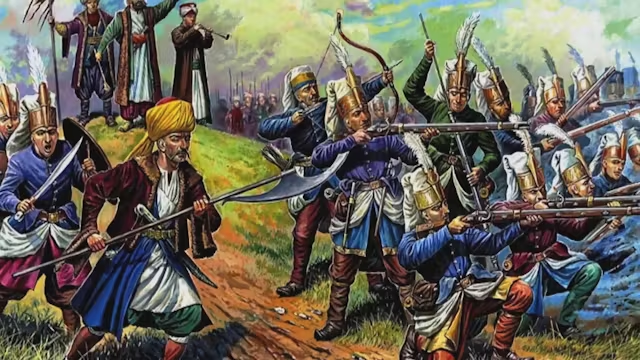Ottomans Versus Christians - The Sick Man of Europe
Our third and final episode looks at the Ottoman Empire’s slow decline in the face of Russian expansion and explores the complex alliances it would forge with European powers in an effort to survive. The map of Europe would be radically redrawn and the Ottoman Empire would come to a humiliating end, giving birth to the modern Turkish Republic.
The episode opens in St. Petersburg, Russia, where Presenter Julian Davison examines the rise of Russian power under the rule of Peter the Great.
Russia and Peter the Great
Vital to Russia’s growth was the establishment of a navy and warm water ports. The Black Sea, just beyond its southern borders, was the obvious choice but it would bring Russia into direct conflict with the Ottoman Empire and spur the powers of Europe to rally to defend it.
Julian looks at the rise of the Russian navy by visiting the historic naval fortresses of Kronstad, in the Gulf of Finland, just outside St. Petersburg.
As Russian power grew, internal corruption was weakening the Ottoman Empire’s military capabilities. Russian ambitions in the Black Sea and the Balkans were emboldened. The Ottoman Empire was labelled the Sick Man of Europe and Russia was keen to deliver the fatal blow.
Julian travels from Russia to the Black Sea and into the Balkans to chronicle the tumultuous struggle between Russia and the Ottoman Empire and uncover the reasons for an Ottoman alliance with their former enemies in Europe.
For Russia, religion was key to the conflict, as Julian learns on a visit to the 17th century New Jerusalem Monastery, just outside of Moscow.
The Monastery, with its faithful replicas of the most important Christian sites in Jerusalem, perfectly expresses the Russian view of itself as the third Rome, the inheritor of Byzantium, and as such, the unifying power for all Orthodox Christians – a concept that was taken to new levels under the leadership of Czar Nicholas I in the 19th century.
Launching a number of military campaigns into the Ottoman controlled Balkans, Czar Nicholas saw Russia as the protector of all Orthodox Christians and was determined to liberate the Balkans of Ottoman and Muslim dominance. But the Ottoman Empire was not as sick as it may have seemed.
Julian visits the Bulgarian town of Silistra on the Danube, where Russian forces launched a shock and awe bombardment only to be brutally repelled by the Ottomans. Thanks to the Russian retreat war could have been avoided but Britain, France and the Ottoman Empire wanted to teach Russia a lesson and pursued them to their naval base on the Crimean Peninsula.
What became known as the Crimean War dragged on for years and left hundreds of thousands dead on both sides. At the same time Europe was experiencing a surge of enthusiasm for all things Eastern. Known as Orientalism, Ottoman worlds were fantasised in works of art and architecture in the West. Julian looks at a number of key artworks and trends of the 19th century that reflected a change in public attitudes towards the Ottomans and strengthened European mistrust of Russia.
From the Crimean War of the 1850’s to the Balkan Wars of Independence to WWI, Julian travels from Batak in Bulgaria to Gallipoli, unpicking the battles, movements and ideas that helped shape modern Europe and transform the Ottoman Empire into a modern Turkish state.
When it was all over, most of the Ottoman’s Balkan territories gained independence and the Ottoman presence in Europe was almost entirely extinguished, but its legacy lives on.
In conclusion Julian returns to the very spot Ottoman warriors first crossed into Europe and ponders the meaning and influence of the Ottoman Empire’s incredible 500 year presence in Europe.
-
Ottomans Vs Christians - Battle for Europe Ep 3 - The Sick Man of Europe

